Russia, whose official name is the Russian Federation, is the largest country by land area in the world.
Although it is the 11th largest economy in the world, Russia has an important geopolitical role, as it is the second most armed country on the planet.
General data from Russia
- Name :Russian Federation
- Capital :Moscow
- Continent :Asia and Europe
- Currency :Russian ruble
- Government regime :Semi-presidential republic
- President :Vladimir Putin (from 2012 to present)
- Language :Russian (official) plus 31 co-official languages
- Population :144 million (2017)
- Area :17,075,200 km 2
- Demographic density :8 inhabitants per km 2 .
- Cities :Moscow, Saint Petersburg, Volgograd, Yekaterinburg, Vladivostok, Sochi.
Flag of Russia
The Russian flag is made up of three horizontal lines white, blue and red. Its origins date back to the 17th century when it was the flag of the kingdom of Russia, already under the Romanov dynasty.
After being replaced by the flag of the Union of Soviet Socialist Republics in 1917, the flag flew again when the USSR dissolved. In this way it has been the symbol of the country since December 1993.
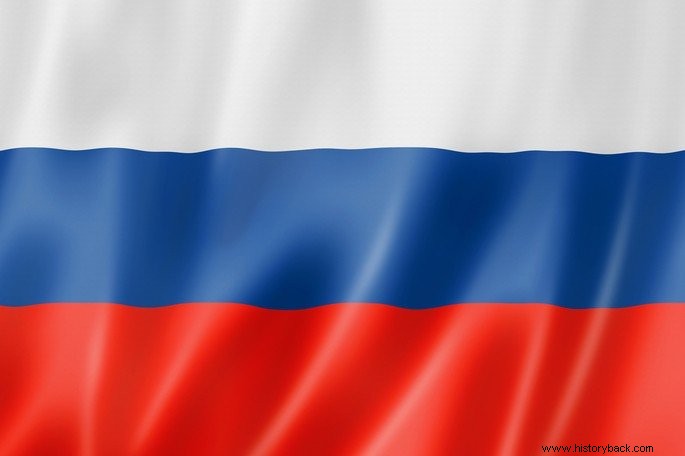
Map of Russia
Russian territory has been expanding over the centuries. First, occupied by Slavic peoples who were organizing to fight the Vikings.
The lands to the east were occupied by the Mongol Empire founded by Genghis Khan and as it weakened, the Russians added conquests.
Currently, the Russian Federation borders 17 countries and has 11 different time zones.
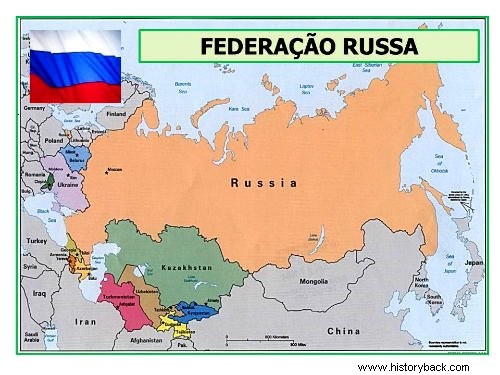
Russian Borders
- Finland
- Norway
- Estonia
- Lithuania
- Latvia
- Poland
- Belarus
- Moldova
- Ukraine
- Georgia
- Azerbaijan
- Kazakhstan
- Mongolia
- China
- North Korea
- Japan and United States (water borders)
History of Russia
By 1547, the Grand Duchy of Moscow was already a considerable regional power and Prince Ivan was the first to be crowned Tsar, the Russian word meaning “Caesar”. After all, the Russians considered themselves the spiritual heirs of the Byzantine Empire.
From this reign, the Russians crossed the Ural Mountains and began their expansion into Asia. After a period known as the “Time of Troubles”, the Russians elected a prince from the Romanov dynasty to be their monarch.
The 19th century was of extreme importance for Russia. The country emerged victorious from the Napoleonic Wars and conquered territories such as Finland, Turkestan, China, the South Caucasus and Alaska.
The Russian Empire began to crumble with the reign of Tsar Nicholas II. Despite abolishing serfdom and bringing improvements to the population, his role in wars against Japan and World War I ended up diminishing his popularity.
Nicholas II reigned until 1917, when he abdicated under pressure from the Russian Revolution. Subsequently, he and his family were murdered by the Socialists.
In the 1920s, with the death of Lenin, and under Stalin's iron leadership, Russia became the Union of Soviet Socialist Republics (USSR).
Using methods of forced collectivization, censorship, personality cults and prisons like the Gulag, Stalin managed to elevate the country to an industrial, agricultural and military power.
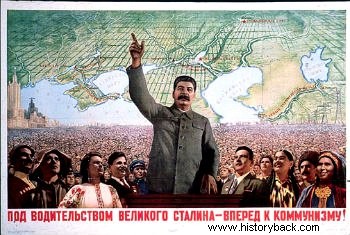
In this way, the country found itself ready for the Second World War and managed to face the German Army at the cost of a lot of sacrifice.
Allied with the United Kingdom and the United States, the Red Army emerged victorious and the USSR extended its influence to Eastern Europe.
This polarity between capitalism and socialism was accentuated in later decades with the Cold War period.
At that time, the USSR and the USA fought an ideological war that intervened in all areas of civil, political and military life.
The Olympic Games, the space race, culture, everything was a pretext for the two powers to show the world the advantages of each of the systems.
The two countries never faced each other directly, but through their allies. The world held its breath, for example, during the Korean War and the Missile Crisis in Cuba. The danger of nuclear war seemed real and imminent.
However, the wars continued to be carried out on the periphery of the world and without great damage to both countries.
End of the USSR
In the 1980s, with the rise of Mikhail Gorbachev as secretary of the Communist Party, a new era for the Soviet Union began. Gorbachev established dialogue with President Ronald Reagan and British Prime Minister Margaret Thatcher.
The aim was to ensure that the policies of Perestroika and Glasnost had international approval in order to ensure a smooth transition to the Soviet Union.
However, this was not possible, because the internal nationalist pressure was greater. Several countries then took the opportunity to proclaim independence and cut ties with Russia.
Likewise, the capitalist powers did not provide any type of financial aid to the country.
Russian Federation
After the dissolution of the Soviet Union, Russia renamed itself the Russian Federation, adopted the old pre-1917 flag, and held free elections.
There was great anticipation as to how the largest of the Soviet republics would act towards their former member states.
In order not to lose the influence and contact of the former Soviet Republics, Russia proposed the creation of the Commonwealth of Independent States (CIS). This organization was intended to be a non-governmental association that brought together the former republics of the USSR.
Domestically, President Boris Yeltsin managed, through a coup, to close the Parliament (the Duma) and make the transition from socialism to neoliberalism. This passage was not easy, due to the lack of regulation and the corruption of the Russian oligarchy. The president also faced conflicts in Chechnya and Kosovo.
Without popular support and his own party, Yeltsin resigned from the presidency on December 31, 1999. His post would be occupied by then vice president Vladimir Putin, who would become a major figure in Russian politics in the first two decades of the 21st century.
Relationship between Russia and the United States
Although Russia is no longer the world's second economic power, its geopolitical weight is undeniable.
The relationship with the United States remains delicate, as both vie for supremacy in Asia. Equally, there is always care with the weapons and nuclear arsenal that this immense country possesses.
Since the beginning of the war in Syria in 2011, Russia and the United States have been fighting a tense battle over the influence of the conflict and the region.
For now, the Russians have taken the lead in sending troops. However, they support Syrian President Bashar al-Assad, who has now become the "non-grata persona" for the West.
President Vladimir Putin has also been accused of interference in American internal affairs, as was the case with the election of American President Donald Trump in 2015.
Civil rights in Russia
Democracy is consolidated in Russia through elections and the elimination of censorship. However, some civil rights are still not fully respected.
Jehovah's Witnesses in Russia
On April 20, 2017, the Russian Supreme Court of Justice declared the activities of Jehovah's Witnesses throughout the country to be extremist.
Thus, their properties were confiscated and any believer who belongs to this religion is caught distributing material or gathering, can be sentenced to up to 10 years in prison. The Russian court's decision raised protests around the world.
Jehovah's Witnesses were persecuted during Stalinism in the USSR and an estimated 10,000 were deported or imprisoned.
With the return of democracy, it seemed that the problem was over, but in 2004 a Moscow court had already accused them of inciting its members to commit suicide. Thus, the Moscow community had to be dissolved.
With 170,000 practitioners in Russia, Jehovah's Witnesses have become the new target of Vladimir Putin's centralist policy.
Economy of Russia
The Russian territory is rich in nickel, iron, diamond, oil, natural gas and the country holds 1/4 of the planet's fresh water reserve. The industry, on the other hand, is geared towards the armaments and aerospace sector.
After the 90's were quite complicated because of the transition from socialism to capitalism, the Russian economy started to grow again.
From 2000, with the election of Vladimir Putin, the country definitively adopted the liberal economy to compete with the capitalist world. In the period 2000-2008 Russia achieved growth rates of 8% per year.
However, with the 2008 crisis, the great Slavic nation suffered a heavy blow. First there was the devaluation of the ruble by 10% and the increase in public spending. At the same time, Putin was stripping citizens of their civil rights and stifling any attempt at more autonomy by the states that make up the Russian Federation.
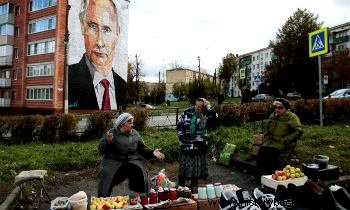
So, in 2012, the economy started to slow down. We can point out some reasons such as the lack of:
- integration into international trade;
- competitiveness;
- legal certainty.
Added to this are the economic sanctions imposed on account of the crisis in Ukraine and the annexation of Crimea.
Currently in Russia, 19 million people are below the poverty line. Paradoxically, it is the country that registers the largest number of billionaires in the world.
Therefore, to get out of its isolation, Russia has encouraged its participation in economic agreements such as the Eurasian Economic Union or the BRICS.
Russia is part of several economic forums such as the G8 and the G20.
Russian culture
As a vast country that mixes a dozen peoples, Russian culture is rich and varied.
Russian kings patronized the arts and purchased a large amount of paintings, sculptures and antiques to impress their neighbors. Suffice it to mention that the world's largest museum, the Hermitage, is located in the country.
In addition, 25 Russian cities are considered World Heritage Sites by Unesco such as Derbent, Bogar or the historic center of St. Petersburg.
Russian craftsmanship is rich in detail and their embroidered clothes were a sign of distinction for the peasants.
The most popular objects of Russian crafts are "matriochkas" . These constitute a series of dolls in increasing sizes that allow them to be fitted one inside the other.
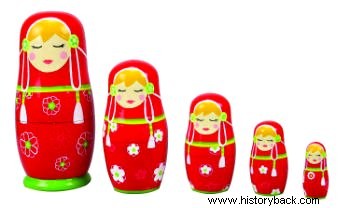
We highlight Russian artistic contributions that influenced the West.
Russian music
Russian music has a long tradition and its instrumentalists are among the best in the world.
Composers such as Alexander Borodin, Igor Stravinski, Sergei Rachmaninoff, Modeste Moussorgski and Mikhail Glinka have their plays performed to this day in all the great theaters of the world.
Russian Dance
In addition to vigorous folk dances, Russians have taken ballet to a new level through elaborate choreography, new techniques and performers.
The Bolshoi Theater ballet school is considered one of the best in the world. In 2000, the institution opened its only branch in the world in the city of Joinville, Santa Catarina.
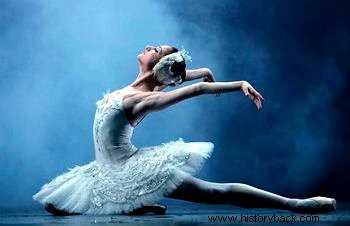
One of the most influential composers of classical ballet was Piotr Tchaikovsky, who composed works such as “Swan Lake”, “The Nutcracker”, “Sleeping Beauty” and “Onegin”.
Russian Literature
Russia stood out in the field of letters with writers such as Leo Tolstoy, Fyodor Dostoevsky, Anton Chekhov, Vladimir Maiakovsky and Alexander Pushkin.
The country has already been awarded the Nobel Prize for Literature 5 times.
Russian painting
Heirs of Byzantine Art, Russian painting developed alongside the religiosity and spirituality of religious icons.
One of the most influential painters of the 20th century was the Russian Wassily Kandinsky, who opened up new possibilities with his expressionism and the abstractionism of his paintings.
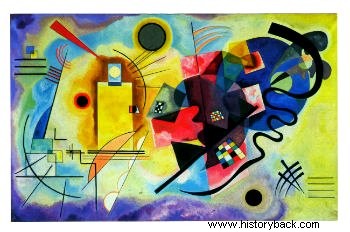
After the Russian Revolution, the artistic school that prevailed in the country was socialist realism. This aimed to exalt the new world that was being built by the socialists.
Religion of Russia
The Russians adopted Christianity in 988, when the Grand Prince of Kiev and All Russia, Vladimir I, introduced the religion of the Byzantine Empire. Thus, most Russians are Orthodox Catholics.
It is also for this reason that the Russians adopted the Cyrillic alphabet and not the Latin alphabet.
Fun facts about Russia
Russians also have their superstitions. It is considered in bad taste to present someone with a bouquet with an even number of flowers, as it would bring bad luck. Only an arrangement of 5, 7 or 9 flowers is welcome.
Despite currently adopting the Gregorian calendar, the Russian Orthodox Church still follows the old calendar. That's why the country celebrates Christmas in January.
Russia has over 9 million more women than men.
In Moscow, private cars can be taxis. Just make the sign and agree the price of the ride with the driver.
Russia is reputed to be a country where curious situations happen and are publicized via the Internet. That's why Paraná has been called "Brazilian Russia" because of the apparently bizarre events that happen in that state and are posted on social media.
Read more :
- Map of Europe
- Vladimir Putin
- Mikhail Gorbachev
- USSR
- BRICS
- Flag of Russia
